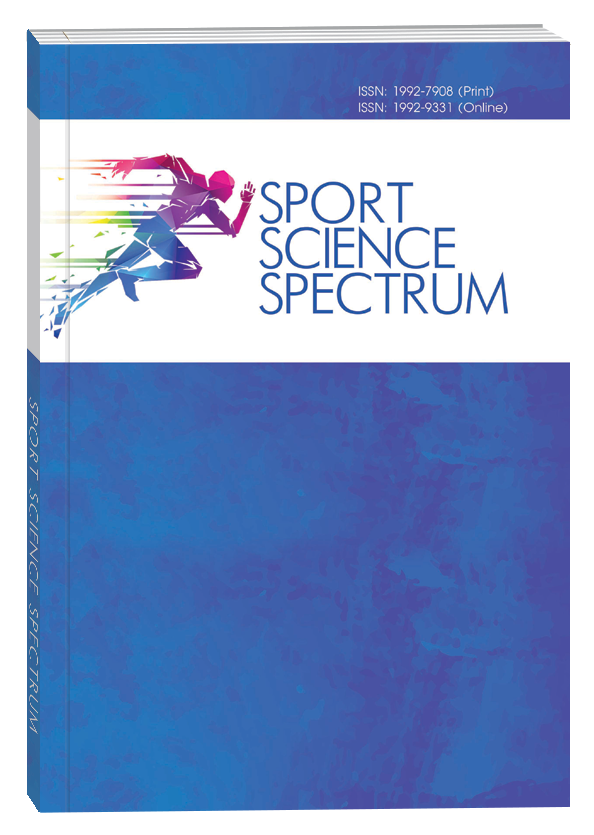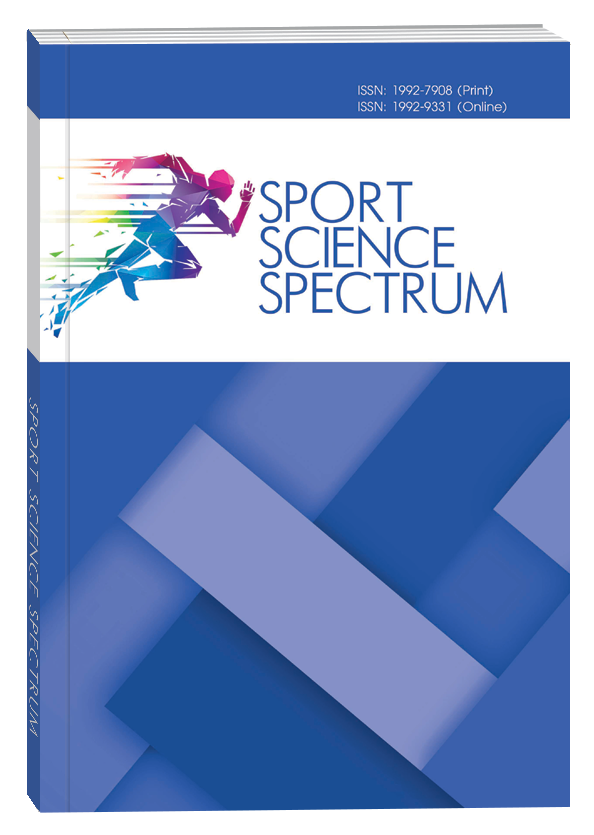EFFICIENCY AND VARIETY OF ATTACKING ACTIONS IN JUNIOR AND SENIOR ELITE KARATE PLAYERS’ MATCH
DOI:
https://doi.org/10.32782/spectrum/2025-1-1Keywords:
karate, elite, players, juniors, seniors, techniquesAbstract
Introduction. Karate is a combat sport vastly popular over the world, and important part of Asian Games program. Inclusion of Karate to 2020 Olympics program targeted engaging younger people in the Olympic movement. Karate thus joined judo and taekwondo as the third Olympics-approved sport in the martial arts category.Study objective. The general objective of the study was to compare the variety and efficiency of the attacking actions in senior and junior elite karate players’ match.Methodology. Eight seniors and eight juniors’ matches (total 16) were analyzed using the NACSPORT performance analysis software package. The players were participating in the finals of the world and continental karate competitions in the kumite category. Analyzed variables were divided into two groups: the variations of attacking actions ( %) and the efficiency (ratio of scored attempted to attempted techniques) of the attacking actions.The data collected from this study were analyzed by using the SPSS software version 27.0 through independent t-test and Pearson Chi-square test.Results. The statistically significant findings from this study were that among both groups, the overall variations of the attempted attacking actions were statistically different (P < 0.05). The efficiency of the attacking techniques however did not have any significant differences (P > 0.05). In other words, even though kicking techniques could help in obtaining the higher score, the chances of converting an attempt into a good and successful scoring kicking techniques aren’t very high in a competitive karate fight at the highest level of competitions. Conclusions. The result of this study might give a chance to all the karate practitioners especially to the coaches to make suitable changes to their methodology of training their athletes to give a better preparation the new generation of the juniors to successfully reach the senior performance level.
References
1. Bishop & Mark (1989). Okinawan Karate. pp. 153–166. ISBN 0-7136-5666-2.
2. Campagnini, Master. (2015) “Karate Tournament Information”. AmKor Karate. Retrieved Jan 29, 2017, from http://amkorkarate.com/karate-tournament-information/
3. Bartlet, R. (2001). Performance analysis: can bringing together biomechanics and notational analysis benefit coaches? International Journal of Performance Analysis in Sport, 1, 122–126.
4. Koropanovski N., Jovanović S., Dopsaj M. (2008), Characteristics of pointing actions of top level female competitors in karate [in:] Proceedings of World Congress of Performance Analysis of Sport VIII, Otto von Guericke University, Magdeburg, pp. 386–392.
5. Beneke R., Beyer T., Jachner C., Erasmus J., Hutler M. (2004), Energetics of karate kumite, European Journal of Applied Physiology, v. 92, no. 4–5, pp. 518–523.
6. Imamura H., Yoshimura Y., Nishimura S., Nakazawa A.T., Teshima K., Nishimura C., Miyamoto N. (2002), Physiological responses during and following karate training in women, Journal of Sports Medicine and Physical Fitness, v. 42, no. 4, pp. 431–437.
7. Vidranski T. (2006), Utjecaj treninga karatea na motorička obilježja djece od 9-11, Magistarski rad. Kineziološki fakultet, Zagreb.
8. Serti, H., Segedi, I., & Vidranski, T. (2012). Situational efficiency of arm and leg techniques in a karate fight of top-level female karate competitors. Journal of Martial Arts Anthropology, 12(2), 44–49.
9. Ivaškien, V. (n.d.). The Most Effective Techniques Used by Shotokan Karate Junior Female Athletes During Competition, II, 273–277.
10. NACSPORT Performance Analysis Software (https://www.nacsport.com/index.php?lc=en-gb#).
11. Nakayama, M. (1967), Dynamic karate: instruction by the master. London: Ward Lock. 308 p.
12. Ivaškienė, V. (2015). The most effective techniques used by shotokan karate junior female athletes during competition. Society Integration Education Proceedings of the International Scientific Conference. 2:273. DOI: 10.17770/sie2012vol2.141
13. Katić, R., Jukić, J., Glavan, I., Ivanisević, S., & Gudelj, I. (2009). The impact of specific motoricity on karate performance in young karateka. Collegium Antropologicum, 33(1), 123–30. Retrieved from http://www.ncbi.nlm.nih.gov/pubmed/19408615





